

Keys do not seem to provide clearcut distinctions for this population; e.g., Shinners & Mahler's Illustrated Flora of North Central Texas, p. 848:
Note the overlapping dimensions and the need for hedge words such as "usually," "sometimes," "not noticeably."
I found that (for me) applying these distinctions in normal outside lighting, especially in sunlight, to be futile. To test this in a better framework I scanned in leaflet surfaces at 600 dpi, with a flatbed scanner with exactly the same brightness and contrast settings. Even then I had difficulty applying lighter & more pale distinctions for the lower leaflet surface. The results for 1 cm2 upper and lower surface sections for 8 different plants I had hoped to identify resulted in the table below.
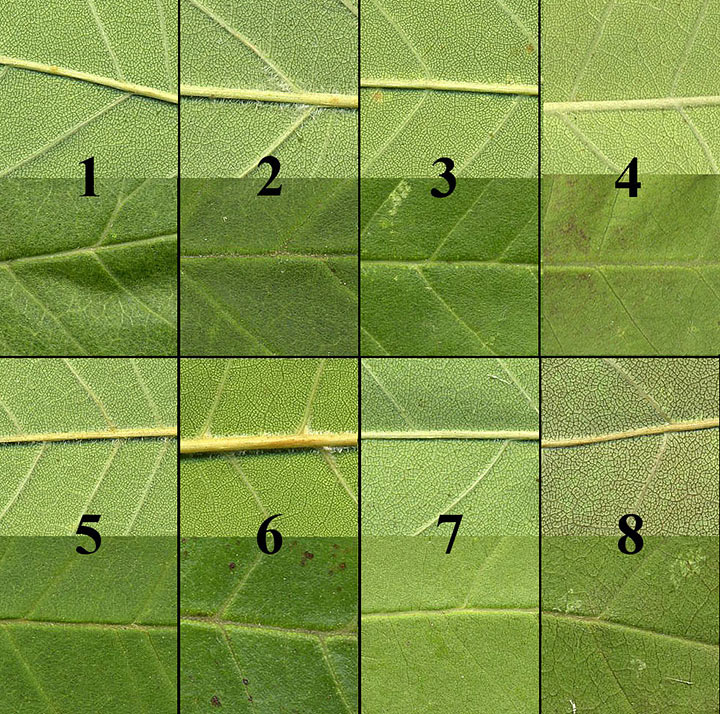
Can you tell which of the 8 plants are which taxon? The answer to this question is on a separate page.
Lightness and paleness are apparently an attempt to simplify a subtle distinction that requires a bit more botanical sophistication. Guy Nesom, our Fraxinus expert, has provided a much clearer description (personal communication):
The difference between the two species is striking and should be immediately obvious ... The lower surface of F. albicans is the same as that of F. americana, with a dense overlay of white-reticulate wax. That of F. pennsylvanica has nothing obscuring the epidermal cells.
In effect, comparing the upper & lower surface is pointless. The following lower surface epidermal images were made at 45X magnification for three leaflet surfaces (1 mm2. Seeds are shown for two by way of verifying the identification. Although the epidermal surface is clearly visible only for F. pennsylvanica, the color differences are not so strong. The middle image is not out of focus. The wax overlay is somewhat different with the two F. albicans leaves. [Samaras for each tree are shown as verification.]
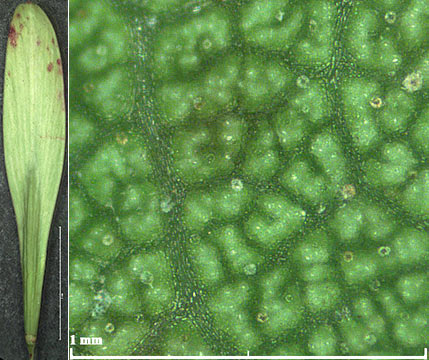 | 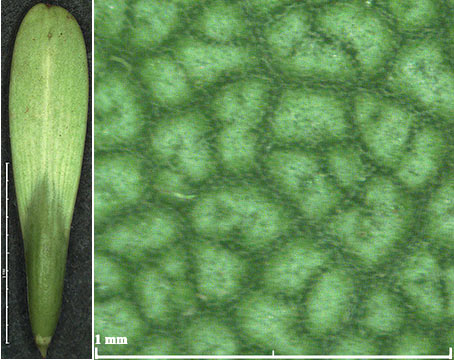 |
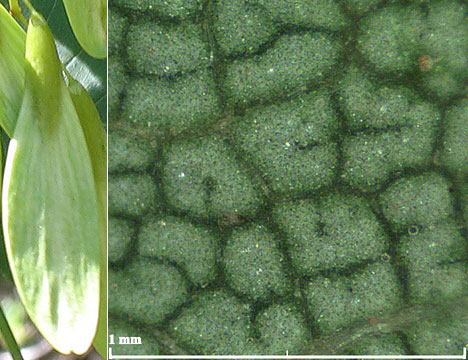 |
|---|---|---|
| F. pennsylvanica (#6) | F. albicans, 'F9' | F. albicans, 'N6' |
For a different perspective, leaflets for the above 3 trees were wraped around a pencil with only the edge at the curve in focus. These images were made at 10X. The tiny hairs with F. albicans were found with roughly half of the plants examined. With both 'F9' & 'N6' the tiny wax granules can be discerned.

F. pennsylvanica (#6)

F. albicans, 'F9'

F. albicans, 'N6'
Petiolule lengths given in the key above range from 0 to 14 mm, with overlap from 3 to 7 mm. In other words, a petiolule > 7 mm should be F. albicans; < 3 mm, F. pennsylvanica. Petiolules of 8 leaflets initially selected for identification were measured and placed on the following frame, marked with purple lines at 3 & 7 mm. With the exception of #4, all fell within the indeterminate 3—7 mm range. But, as determined on other grounds, all 8 are from F. albicans trees. The ranges stated were quite specific and thus give a wrong determination for #4, and were indeterminate for the rest.

Another set of 4 leaflet pairs were selected to illustrate a range of petiolule lengths, labeled A—D, shown below. One pair of petiolules, A, is clearly longer than 7 mm and a second, D, is less than 3 mm. In this set, only B is from F. pennsylvanica; the rest, from F. albicans. In surveying my ash population I found inspecting for petiole lengths as a first approximation to be useless.
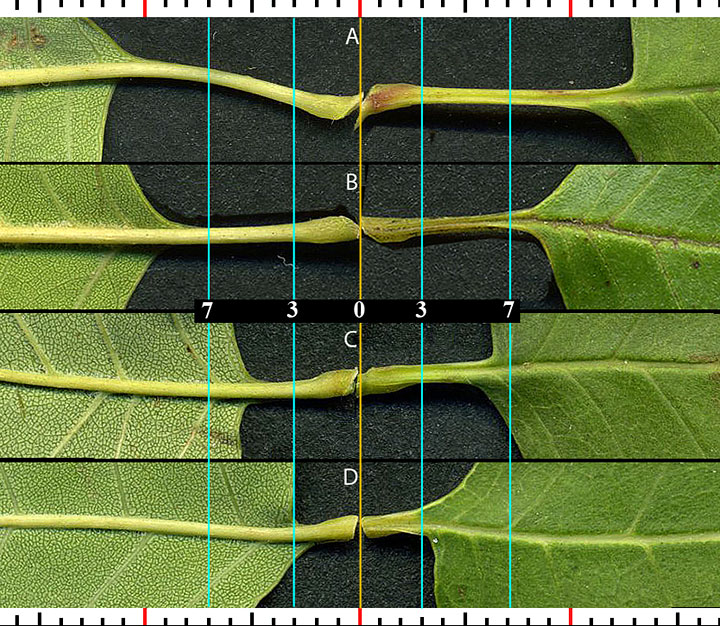
The above key also notes a contrast in the peiolule—blade relationship.
A quick glance at the petiolule images above do not seem to confirm this. But a closer look, at higher magnification, shows that it is clearly wrong for both taxa among our trees. Because the blade is decurrent on the petiolule of both taxa, it is also very difficult to definitely determine a boundary between the blade and the petiolule for purposes of using petiolule length, discussed above. The following images give representative petiolule leaflet base forms.
The following example from F. albicans (N1) shows the blade gradually tapering to its very base, essentially sessile. The two leaf edges clasp the midrib. Viewed from the abaxial (upper) side (second image) this is not so clear.
[Click to enlarge]
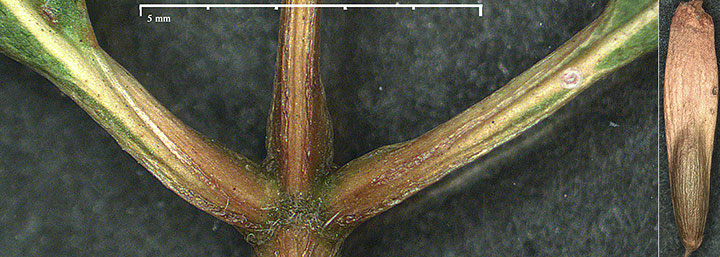
F. albicans N1, adaxial (upper) view (image at 10X).
The following image table presents 3 views of the same leaflet—pediolule base for each of 3 trees. A pair of smaller images shows the adaxial (left) & abaxial base, and below these an adaxial detail of the 'petiolule' base. As above, the leaf margin can be traced almost to the very base of the petiolule. [Click for larger images.]
 |
 |
|---|---|
 F. pennsylvanica |
|
 |
 |
 F. albicans, 'N6' |
|
 |
 |
 F. albicans, 'F9' |
|